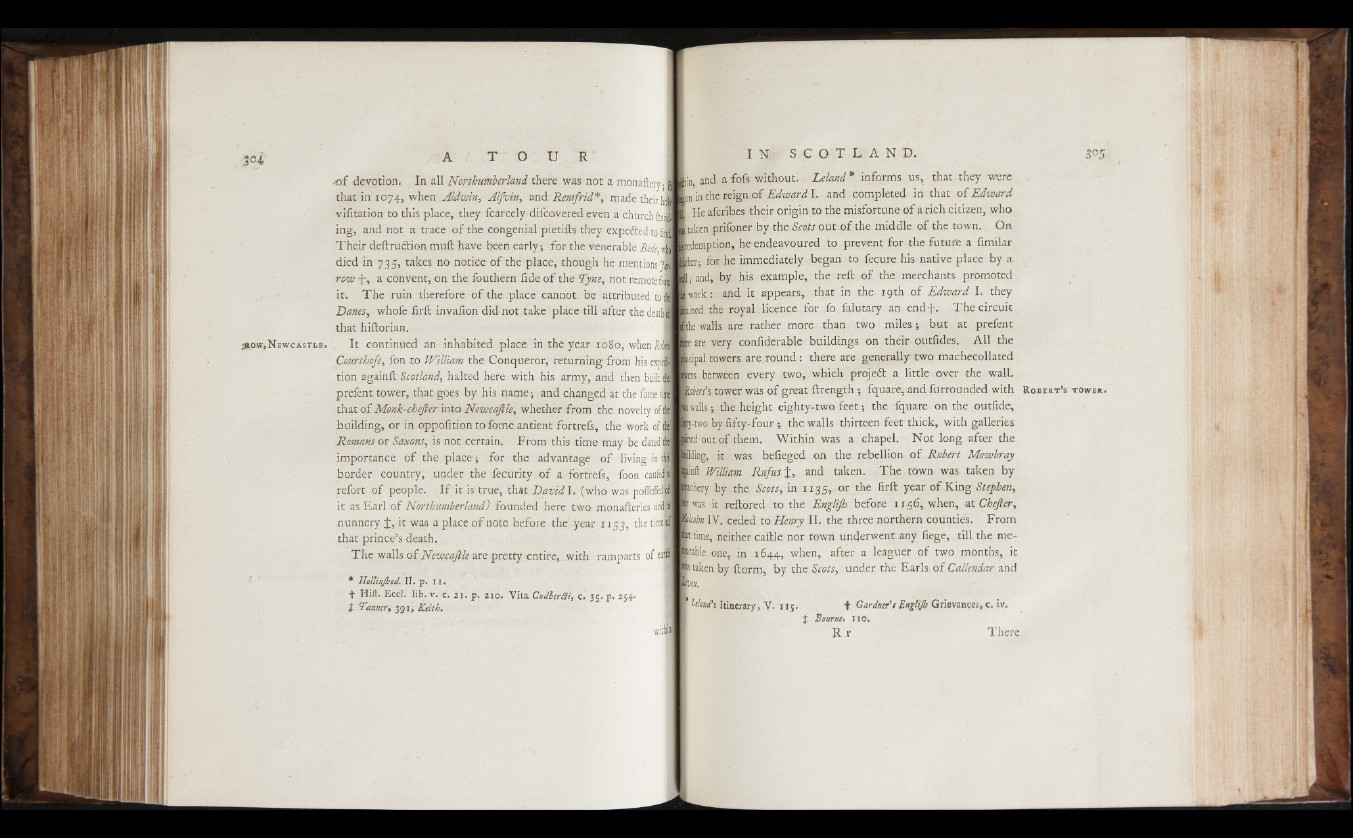
; « o w , N e w c a s t l e .
per
pl I
Stained
jof devotion. In all Northumberland there was not a m o n a f t e r y ■; g
that in 1074, when Aldwin, Alfvin, and Remfrid*, made their J
vifitation to this place, they fcarcely difcovered even a church f t a l
ing, and not a trace of the congenial pietifts they expedted to f j
Their deftrudtion muft have been early; for the venerable
died in 735, takes no notice of the place, though he mentions Jot
row -f-, a convent, on the fouthern fide of the Tyne, not remote frl
it. The ruin therefore of the place cannot be attributed to
Danes, whofe firft invafion did not take place till after the deatlj
that hiftorian.
It continued an inhabited place in the year 1080, w hen A i|
Courthofe, fon to William the Conqueror, returning from his exp
tion againft Scotland, halted here with his army, and th e n built
prefent tower, that goes by his name; and changed at th e fame till
that of Monk-chefter into Newcaftle, whether from the n o v e lty of At
building, or in oppofitiontofome antient fortrefs, the work of Ail
Romans or Saxons, is not certain. From this time may b e dated M
importance of the place* for the advantage of liv in g in tin
border country, under the fecurity. of a fortrefs, foon caufeJi
refort of people. If it is true, that David I, (who w a s poffeffedM
it as Earl of Northumberland) founded here two m o n a fte rie s ana»
nunnery J, it was a place o f note before the year 1153, the timejof
that prince’s death.
The walls of Newcaftle are pretty entire, with ramparts of
• Hollinjhed. II. p . 1 1 .
f Hift. Eccl. lib . v . c. 2 1 . p.
I Tanner, 391, Keith»
210. V ita C u d lcrfti, c . 35. p. 254*
wifll
lin and a fofs without. iIreland * informs us, that they were
Bn in the reign of Edward I. and completed in that of Edward
He afcribes their origin to the misfortune of a rich citizen, who
taken prifoner by the Scots out of the middle of the town. On
ledemption, he endeavoured to prevent for the future a fimilar
for he immediately began to fecure his native place by a
■ and, by his example, the reft of the merchants promoted
|work: and it appears, that in the 19th of Edward I. they
the royal licence for fo.falutary an end-]-. The circuit
the walls are rather more than two miles; but at prefent
[e are very confiderable buildings on their outfides. All the
Icipal towers are round : there are generally two machecollated
lers between every two, which projedt a little over the wall.
|ikrt’s tower was of great ftrength ; fquare, and furrounded with R o b e r t ’s t o w e r .
£0 walls; the height eighty-two feet; the fquare on the outfide,
By-two by fifty-four ; the walls thirteen feet thick, with galleries
Kned out of them. Within was a chapel. Not long after the
Biding, it was befieged on the rebellion of Robert Mowbray
Bainft William Rufus j;, and taken. The town was taken by
by the Scots, in 1135, or the firft year of King Stephen,
Hr was it reftored to the Englifh before 1156, when, at Ckefter,
’culm IV. ceded to Henry II. the three northern counties. From
time, neither caftle nor town underwent any fiege, till the me-
fcrable one, in 1644, when, after a leaguer of two months, it
p taken by ftorm, by the Scots, under the Earls of Callendar and
k
'id's Itinerary, V . 1 15 . t Gardner'1 Englijb Grievances, c . iv .
X Bourne, n o .
R r There